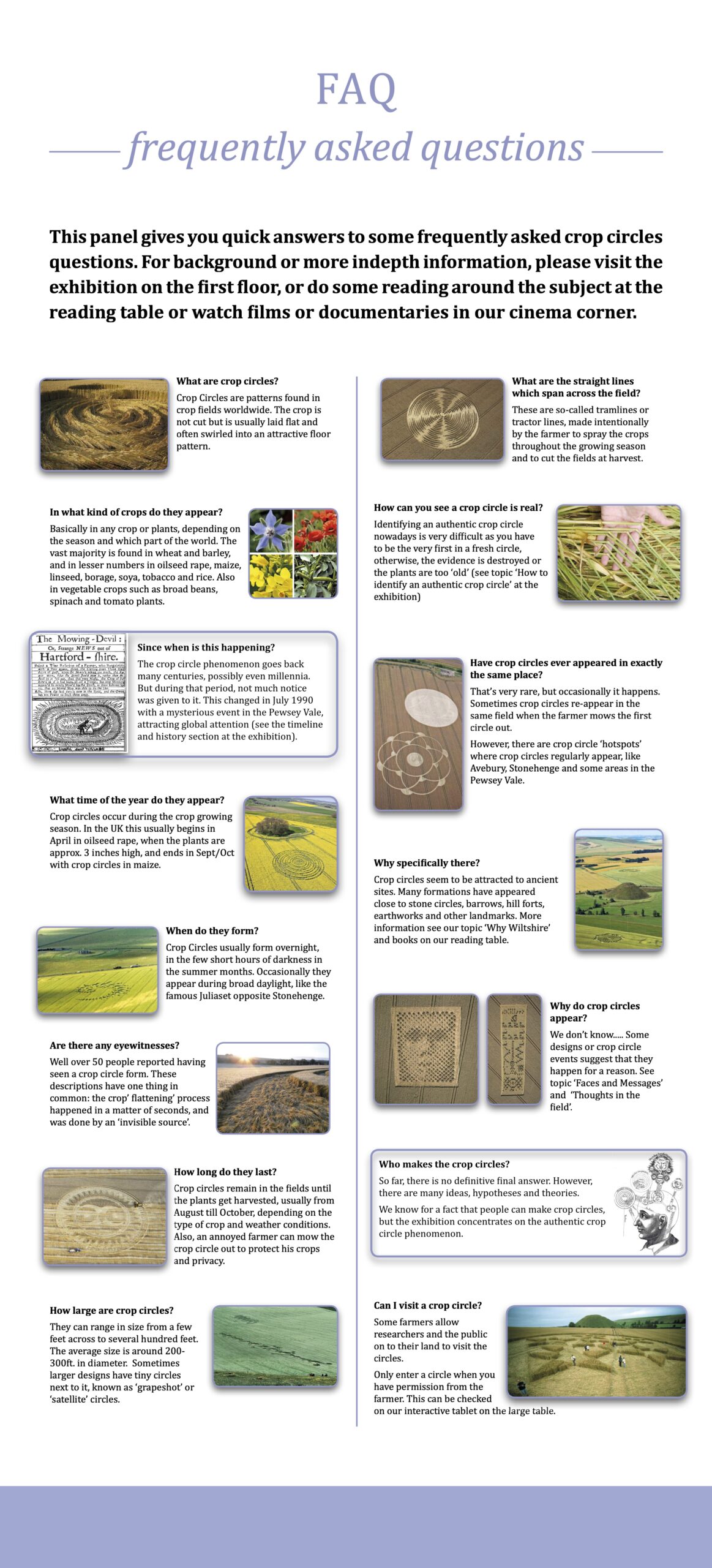What are Crop Circles? A short introduction.
Every year a great number of intriguing patterns are found in crop fields around the world. The plants have not been cut, but are usually laid down and often swirled into attractive floor patterns.
If not trampled by people or animals, the plants will continue to ripen in this position. Most crop circles appear overnight or occasionally during the day in a short time span. According to eyewitness accounts they are formed in a matter of a few minutes, or even seconds.
The majority of crop circles appear in cereal crops like wheat and barley. In lesser numbers, they are found in oilseed rape, linseed, poppies, borage, grass, tobacco and in vegetables crops such as spinach, broad beans, carrots and rice.
Both historically and to the present day, the vast majority of crop circles are found in England, the highest concentration being seen in the South West, especially around the counties of Wiltshire and Hampshire.
The arrival of a sensational crop circle ‘pictogram’ in July 1990 in Wiltshire (East Field Pictogram) caused worldwide publicity and put the phenomenon on the map. This event was the start of a new era in modern crop circle history. Throughout the years that followed a sudden increase and shift took place in their sizes, designs, numbers and locations. Small and simple circles developed into huge, intricate, geometrical patterns of stunning precision and beauty. At the same time the numbers of circles reported increased dramatically, to well over a hundred reports annually.
All of this leading to more people wondering ‘what is going on’, more research projects, more visitors to the area and more frustration for the farmers, who had not asked for the circles on their land and were given no choice.
So far approximately 7000 formations have been recorded in more than 60 countries around the world, ranging from Belgium, Canada, Germany, Indonesia, Italy, Japan, Norway, the Netherlands, Indonesia, Italy, Poland, Russia, South Korea, Switzerland and the Ukraine.
Our FAQ panel (see illustration) gives you quick answers to some frequently asked questions.
